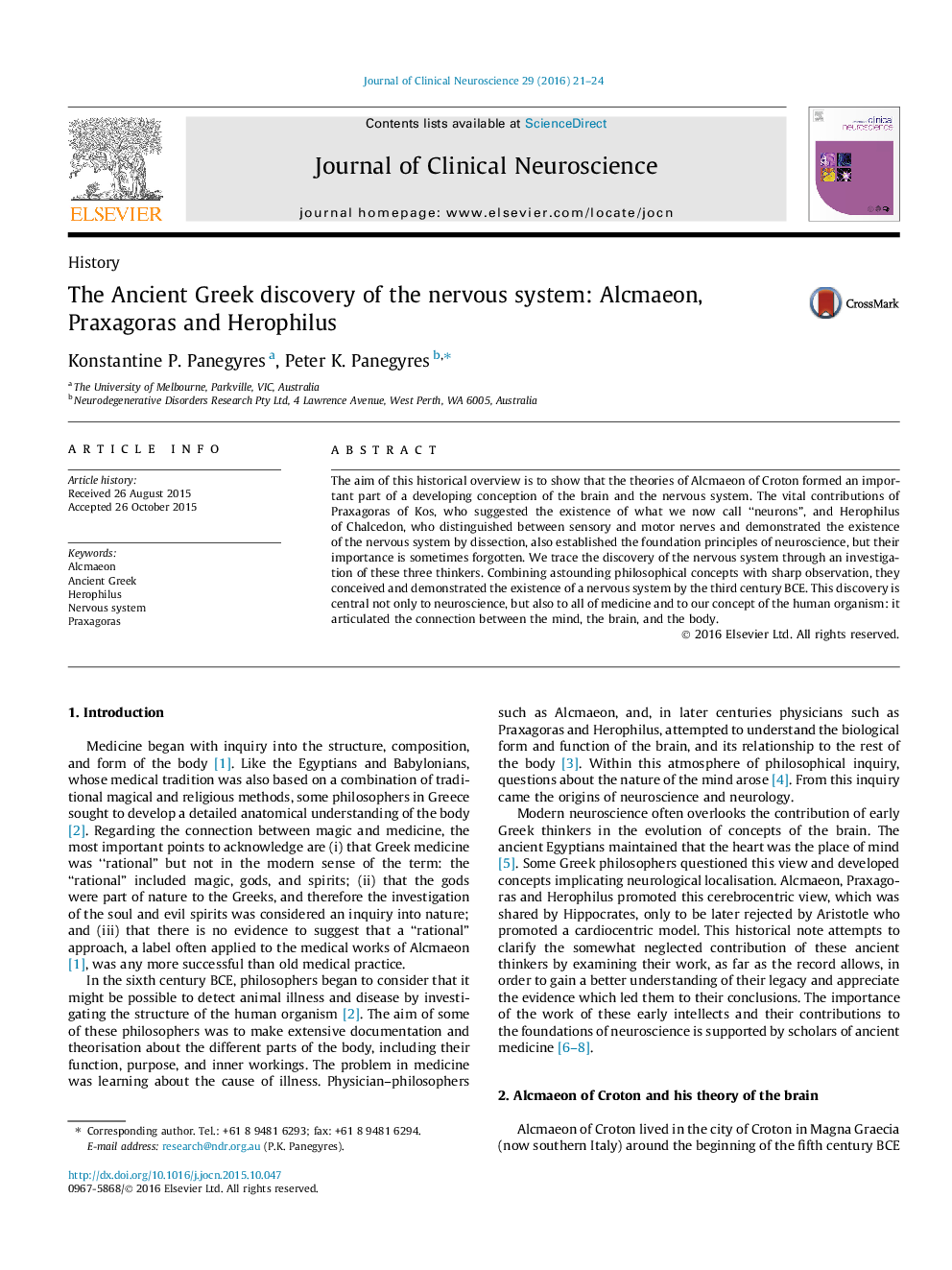| Article ID | Journal | Published Year | Pages | File Type |
|---|---|---|---|---|
| 3058402 | Journal of Clinical Neuroscience | 2016 | 4 Pages |
•Alcmaeon of Croton, Praxagoras of Kos, and Herophilus of Chalcedon were three Ancient Greek philosophers interested in the relation between the head and the body.•Alcmaeon argued that the brain is the seat of intelligence, connected to the extremities of the body by poroi.•Praxagoras suggested that the brain controls movement in the body, and posed the existence of neurons responsible for sending brain signals through the body.•Herophilus used dissection to demonstrate the existence of a nervous system distinct from the vascular system, discovered nerves connected to inner organs and muscles, and distinguished between sensory and motor nerves.
The aim of this historical overview is to show that the theories of Alcmaeon of Croton formed an important part of a developing conception of the brain and the nervous system. The vital contributions of Praxagoras of Kos, who suggested the existence of what we now call “neurons”, and Herophilus of Chalcedon, who distinguished between sensory and motor nerves and demonstrated the existence of the nervous system by dissection, also established the foundation principles of neuroscience, but their importance is sometimes forgotten. We trace the discovery of the nervous system through an investigation of these three thinkers. Combining astounding philosophical concepts with sharp observation, they conceived and demonstrated the existence of a nervous system by the third century BCE. This discovery is central not only to neuroscience, but also to all of medicine and to our concept of the human organism: it articulated the connection between the mind, the brain, and the body.
